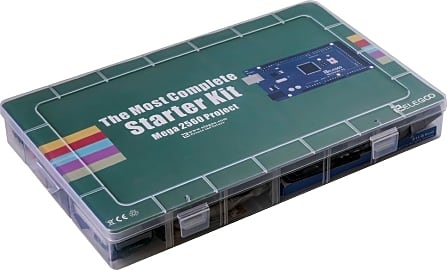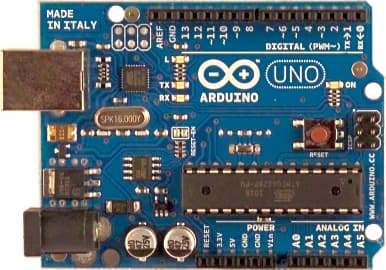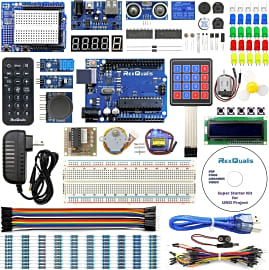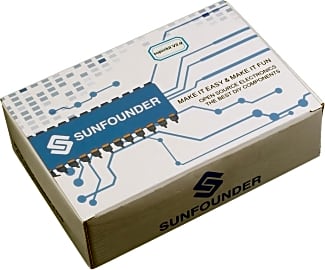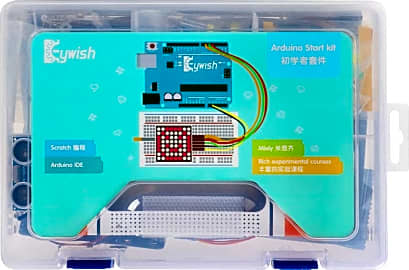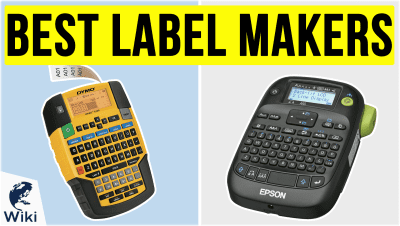The 10 Best Arduino Starter Kits

This wiki has been updated 32 times since it was first published in February of 2017. Not only is Arduino an engaging and affordable platform that enables technologists and creative types to engage in a variety of electronics projects, it’s a great choice for beginners to start experimenting with the ins and outs of hardware and software. We've ranked the market's best starter kits here by their components, project variety, and ease of use for newbies. When users buy our independently chosen editorial choices, we may earn commissions to help fund the Wiki.
Editor's Notes
September 23, 2020:
While it's hard to go wrong with any of the starter kits on our list, there are a few things that might make choosing one over the other particularly easy. Certain components might be good for specific users, like joysticks for RC fans who want to take apart and reassemble their cars, or digital displays for horology enthusiasts who want to build their own clocks.
Personally, I can have a terrible time with organization, and I'm not about to bust out my label maker to ensure that every little component has a clearly identifiable home. A set like the DFRobot 15 Tutorial or the Uctronics Ultimate will actually do this for you, as each component or component set comes in a clearly labeled bag, with the bags in the DFRobot set being particularly specific and easy to read.
Of course, the Official English K007 remains one of the simplest and most accessible options out there. And while it doesn't rely on a huge number of components like the Elegoo Mega, the specificity of its parts and projects can help focus a young learner and make the lessons easier to complete and more educational than they might be otherwise.
July 17, 2019:
Given the fact that it comes directly from the Arduino brand, the official kit retained its number one position on our list. We added a pair of fine new entries, as well, including a nice set from DF Robot, which not only comes with a slew of hardware and 15 tutorials, but the components of which come packed in a way that makes it extremely easy to learn what's what without having to compare pieces to a list. We also found a nice set for our special honors section, as it contains more than 500 individual components. If you or whomever you're shopping for is guaranteed to turn this into a lifelong hobby, there are few finer option out there, even despite its high cost.
Special Honors
A&R Nano Uno Mega Monster This set from Automation & Robotics is one of the most comprehensive on the market for newcomers to the hobby. It includes over 500 individual components — more than 10 times some other options — but it's definitely on the pricey side, so if you're not sure that you're going to fall in love with it, it might be a risky purchase. automationroboticsarduino.com
The Open-Source Electronics Revolution
Arduino-compatible boards can be made without royalty payments and programmed using a library of open-source development tools.
Back in the halcyon days of the 1970s, when the term "hacker" referred to people who programmed for the sheer joy of it and microprocessors were something new on the electronics horizon, software was given away free and hardware was cheap, aimed at hobbyists who assembled computers in their basements and garages. The result was a period of innovation that led, through the work of enthusiasts like Steve Wozniak and Steve Jobs, to the interconnected world of today, something that wouldn't have been possible if these young hackers hadn't been able to get their hands on inexpensive motherboards. That allowed them to move computing from universities and corporations into the domain of ordinary users, who didn't have small fortunes to spare or room for a mainframe in their home offices.
The Arduino project, founded at the Interaction Design Institute in Ivrea, Italy, aims to revive that spirit of affordable innovation by making hardware and software designs available to anyone who wants to create or program an electronic microcontroller system — a computerized brain that can control automated devices of all kinds. Arduino-compatible boards can be made without royalty payments and programmed using a library of open-source development tools.
An Arduino-compatible board consists of an Atmel AVR microcontroller or comparable central processing unit, various sensors for inputs for detecting lights, sounds and other forms of radiation, and outputs for controlling complex machinery. Coding an Arduino device is usually performed through the low-level Wiring development platform or the simpler, visual-arts-oriented Processing language, though other languages are available, often for free. These languages can be expanded through libraries of code written in C++. Arduino boards even have their own integrated programming environment that provides all of the tools a developer needs, including an editor and a debugger. The software for Arduino programming is available for Windows, Macs, and Linux, so that any desktop computer can work with the boards.
Why Would You Use An Arduino Board?
The Arduino platform provides an ideal way to learn how microcontroller hardware and software works, from the bare-bones level of logic circuitry to the high level of abstraction that compiled and interpreted programming software provides. Using the Arduino architecture, you can bootstrap your personal skill set from a total ignorance of electronics principles to that of a high-level hardware hacker, in the classic sense, who can build not just computers, but computer-controlled robotic machinery. Arduino is primarily used as a microcontroller system, a cybernetic way of adding intelligence to machinery, from microwave ovens to robots. A knowledge of Arduino coding is invaluable as a gateway to a career in electronics, but can also make a great hobby for tinkering around in your den.
Then again, you may have a very specific project in mind, with its boundaries limited only by your imagination.
A primary advantage of Arduino kits is cost. Because the hardware that they're based on is so common, the kits tend to be inexpensive and allow you to take a chance on a hobby that you may or not find to your taste — or to teach your children about electronics without worrying that you'll max out your credit card getting them started. Of course, Arduino kits also tend to be expandable. You can buy more cables, sensors, and servo-motors depending on the size of the project you choose to tackle. But you can start out small and work your way to more ambitious goals.
The modern world of digital electronics may seem intimidating, but it's actually based on a simple set of logic rules and voltage levels. A solid grounding in these rules is both a way of making the interconnected universe around you seem less intimidating and of giving you at least a chance of making a contribution to that universe yourself. An advantage of Arduino hardware is that you don't even necessarily have to know what you plan to do with it. Just start assembling circuits and writing code. The possibilities are vast, and as you discover what the circuitry and software can do, you'll begin to see possibilities for invention and creation that had never occurred to you when you started out. Then again, you may have a very specific project in mind, with its boundaries limited only by your imagination.
What Is The Value Of An Arduino Kit?
If you're the kind of person who's memorized the inventory at your local Radio Shack, you might be able to create Arduino hardware from scratch on a breadboard, but a good Arduino kit will provide you with the parts and the instructions necessary for building microcontrollers with little more than a screwdriver and an Allen Wrench, if that. These days, electronics kits are more likely to snap together than to require soldering or taping wires.
An Arduino kit won't turn you into Elon Musk, but it may start you on the road to a career in advanced electronics.
What can you expect to find in the box when you open a kit? At the very least, a breadboard for assembling circuitry, a power source, connectors, USB cables, LEDs, servo-motors, and a host of sensors for everything from electromagnetic radiation (light, infrared, ultraviolet, radio waves) to water levels. Some come with tutorials in PDF or video form. Further tutorials are available online.
Free Arduino software is readily available on the Internet. Take a look at Arduino's own website to get a sense of the possibilities.. These resources come not just from electronics enthusiasts, but from a worldwide community of students, professionals, artists, programmers, and anyone else who's found a use for Arduino hardware in their work or hobby.
The days of Wozniak and Jobs aren't over. Just ask inventor Elon Musk, who started out writing games for the Commodore Vic-20 and went on to build electric cars and rockets that may one day fly colonists to Mars. An Arduino kit won't turn you into Elon Musk, but it may start you on the road to a career in advanced electronics. And if you wind up as one of those colonists on Mars, don't be surprised if your equipment is powered by Arduino boards.



